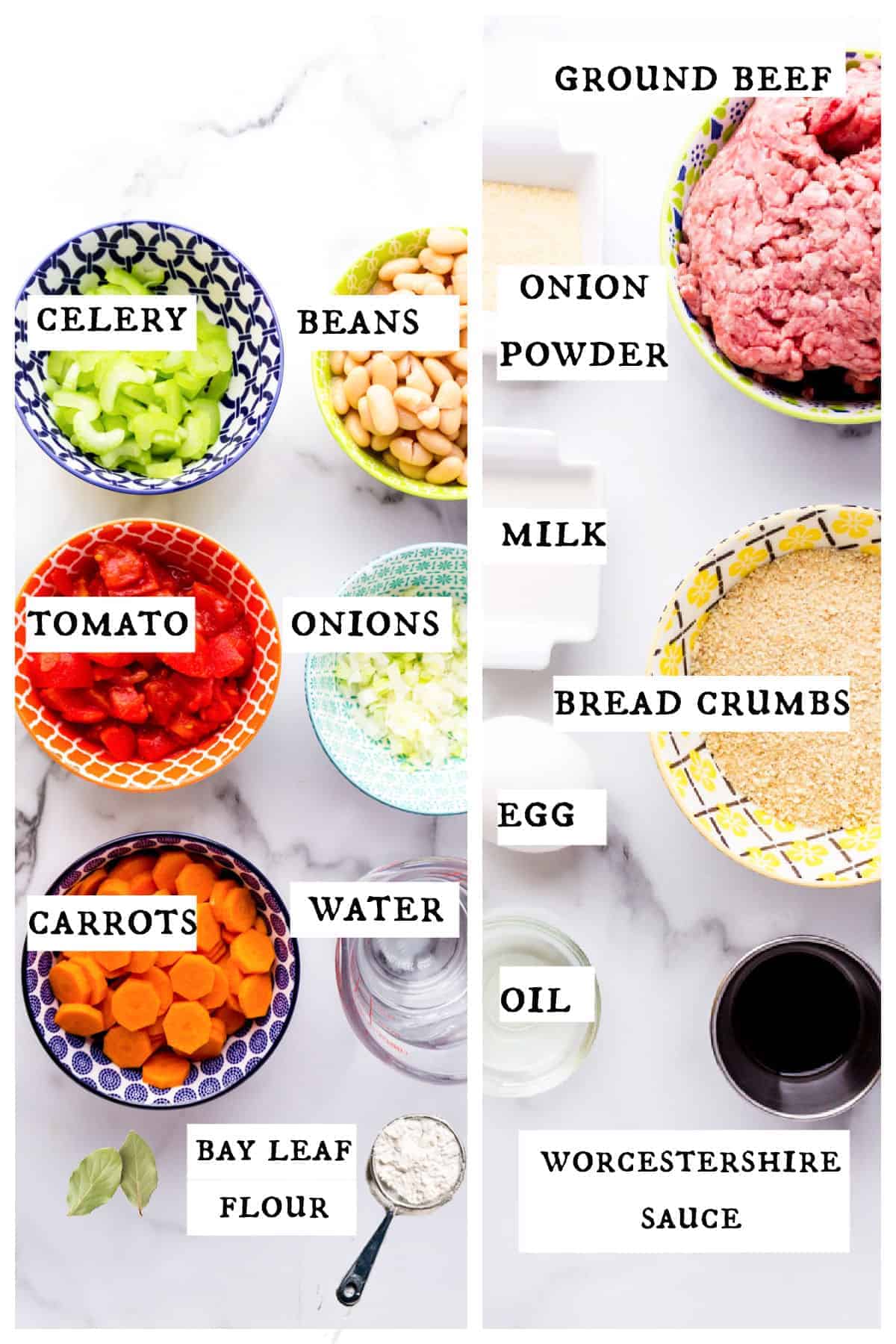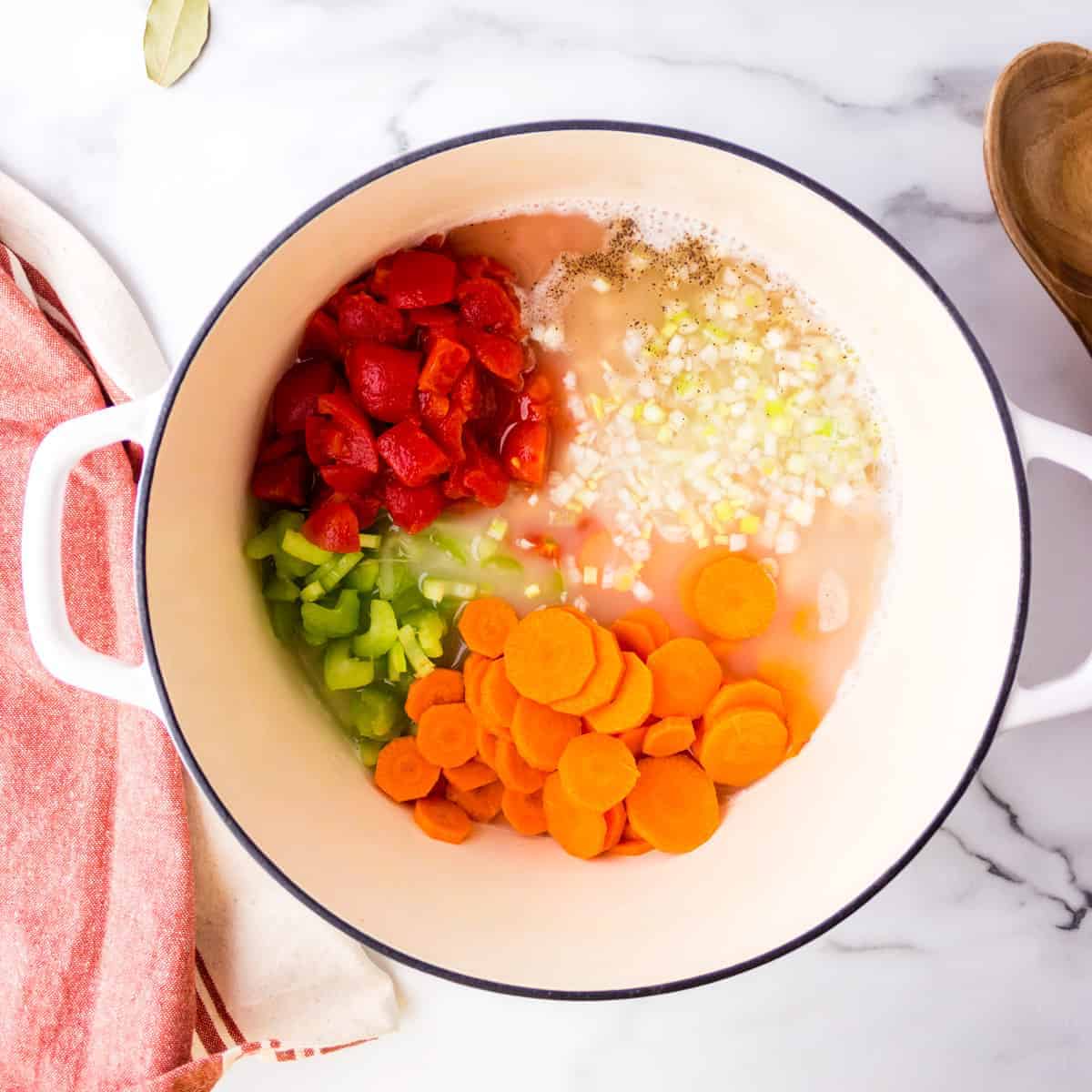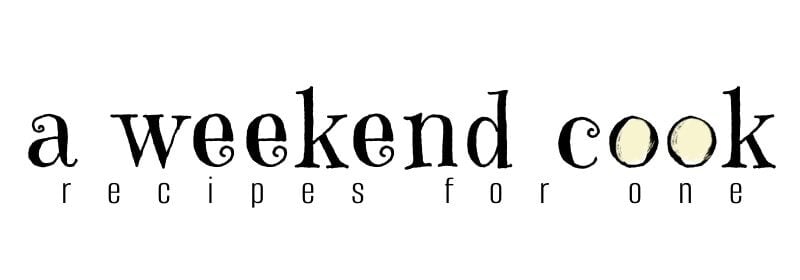This Old-Fashioned Meatball Stew recipe is the epitome of a satisfying home-cooked meal. This timeless recipe combines tender, flavorful meatballs with a rich, savory broth and an assortment of hearty vegetables.
Other great beef stews include this tasty slumgullion stew , a classic short rib beef stew and the popular tuscan tortellini stew.

Ingredients

This stew requires just a few simple ingredients, and here are a few notes to help you pick the best ingredients.
- Ground beef: I found a 20% fat content works best for the meatballs, just enough fat to provide a great flavor.
- Bread crumbs: You can use packaged plain bread crumbs or make your own from stale bread.
- Worcestershire Sauce: I love the flavor this adds to the meatballs; it makes a difference in the depth of the flavor.
- Beans: Canned beans make this an extra easy recipe; you can also use black beans or great Northern for a bit of change.
Recipe Instructions

Step One: In a large bowl combine the hamburger, bread crumbs, milk, onion powder, egg, and Worcestershire into a large bowl. Mix until well combines.

Step Two: Use a small cookie scoop to shape into 1-inch balls.Heat the vegetable oil in a heavy skillet and cook the meatballs until browned. Turn them occasionally so all sides are browned. This takes about 6-8 minutes

Step Three: Preheat the oven to 375 degrees Fahrenheit. Heat the water in a 4-quart Dutch oven and stir in the drained Cannellini beans and flour paste and bring to a simmer. Stir in the salt, pepper, tomatoes with juices, celery, carrots, and onions. Bring the stew to a boil.

Step Four: Cover the Dutch Oven, transfer to the preheated oven, and cook in for 45 minutes . Carefully remove from oven and stir in the cooked meatballs. Heat on stove top for about 30 minutes until the meatballs are fully cooked and hot.
Recipe Variations
- Change up the Meat: Instead of beef use a combination of beef and pork, but you could use ground turkey or chicken,and maybe mix in some Italian sausage for added flavor.
- Vegan or Vegetarian Meatballs: Use lentils, chickpeas, mushrooms, or plant-based meat substitutes to make vegan or vegetarian meatballs.
- Cheese-Stuffed Meatballs: Stuff the meatballs them with cheese before cooking. Mozzarella, blue cheese, or feta could be great options.
- Different Vegetables: In addition to or instead of the traditional carrots, celery, and potatoes, consider adding zucchini, mushrooms, or peas.
- Use Different Herbs and Spices: While a traditional meatball stew often uses herbs like thyme and rosemary, and spices like paprika and black pepper, you could try using other flavor profiles. For example, you might make a Mexican-inspired stew with cumin, chili powder, or an Italian-inspired stew with basil, oregano, and fennel seeds.
- Experiment with Liquids: Instead of using just beef or chicken broth, consider adding a splash of red or white wine, some tomato sauce or crushed tomatoes, a bit of beer, or even some milk or cream for a different flavor profile.
- Add Some Heat: If you like spicy food, add chopped chili peppers, crushed red pepper flakes, or a dash of hot sauce.
- Different Cooking Methods: While this stew is made on the stovetop, it can easily be made in a slow cooker.
Substitutions
Using frozen meatballs in your stew can save a lot of time and effort. Here are a few tips to help you get the best results:
- Thaw Properly: Ideally, you should thaw frozen meatballs in the refrigerator overnight before using them in your stew. Thawing allows them to heat more evenly when you cook them. If you’re in a hurry, you could also thaw them in a microwave on the defrost setting.
- Brown the Meatballs: Even though the meatballs are cooked, consider browning them in a skillet with some oil before adding them to the stew. This can add extra flavor to the meatballs and the stew itself, as the browned bits left in the pan are packed with savory flavor.
- Add Later in the Cooking Process: Because the meatballs are already cooked, you don’t need to add them at the beginning of the stewing process. Instead, add them in the last 15-30 minutes of cooking. This allows them to heat through and absorb some of the stew’s flavors without overcooking and becoming tough.
- Adjust Seasoning: Frozen meatballs are typically already seasoned. So, taste your stew before adding extra salt, pepper, or other seasonings. You can always add more, but you can’t take it out!
- Choose Quality Meatballs: Not all frozen meatballs are created equal. Look for ones with high-quality ingredients and without many fillers or preservatives. These will have a better texture and flavor in your stew.
Good resource: The USDA has a good resource on safe thawing methods.
Make Ahead and Freeze Meatball Directions
To make from scratch using my meatball recipe, and freeze meatballs ahead of time, follow these steps:
- Prepare your meatball mixture according to the recipe and shape it into meatballs.
- Arrange the meatballs on a baking sheet lined with parchment paper. Make sure they are not touching to prevent sticking together.
- Put the baking sheet in the freezer for 1-2 hours to flash freeze the meatballs. This will help maintain their shape when you store them.
- Once the meatballs are hard, transfer them into airtight containers or heavy-duty freezer bags. You can stack them, but it’s a good idea to use wax paper or parchment paper between layers to prevent sticking.
- Before sealing, squeeze out as much air as possible to reduce the risk of freezer burn. If you’re using a container, leave about 1/2 inch of space at the top to allow for expansion.
- Label the container or bag with the date. Properly stored, they will maintain the best quality for 2 to 3 months.
When you’re ready to use the meatballs, you can thaw them overnight in the fridge. If Always ensure they reach an internal temperature of 165°F (74°C) for safety.
Storing Leftovers
Let the stew cool at room temperature for about 20 minutes. Once cooled slightly, store the stew in a covered airtight container. Stew can be stored for 2-3 days in the refrigerator.
For longer storage, freeze the stew. When freezing, leave a little space at the top of the container, as the stew will expand when frozen.
Let frozen stew thaw in the refrigerator overnight. Reheat the stew in a saucepan over medium heat, stirring occasionally, until it is heated. You can also use a microwave, but stir the stew halfway through to ensure even heating.
Only reheat what you will eat at that time, and it’s not recommended to reheat the same stew multiple times. Always ensure leftovers are reheated to a temperature of at least 165°F (74°C) to kill any potential bacteria.
Common Questions
Ground beef is the most common choice for meatballs. It’s flavorful, readily available, and easy to work with. Generally, a mix of about 15-20% fat is ideal for juicy, flavorful meatballs.
Ground pork adds a rich, sweet flavor to meatballs and is often combined with other meats. It has a higher fat content, which can make the meatballs more tender.
Ground turkey or chicken can be used as a lighter, option. Poultry is generally less flavorful than beef or pork, so you may need to add more spices or other flavorings. It’s also important to avoid overcooking poultry meatballs, as they can become dry.
Often, the best meatballs use a combination of meats. For example, many Italian recipes call for a mix of beef, pork, sometimes called a “meatball mix” in supermarkets. This combination gives the meatballs a balanced flavor and a tender texture.
Both baking and frying meatballs before adding them to a stew can work, and each method has its benefits.
Baking is generally less hands-on than frying. You can place all the meatballs on a baking sheet and cook them at once without turning them repeatedly.
Baking ensures that all the meatballs are cooked evenly and to the same level, which can be harder to achieve with frying.
Frying can create a more flavorful meatball and savory flavor. Also, frying provides a crispier exterior to the meatball, which can provide a nice contrast to the soft interior.
If you prefer a lighter meatball and easier method, baking is a good choice. If you like a richer flavor and don’t mind a little extra work, frying could be the way to go. In either case, browning the meatballs before adding them to the stew will provide a depth of flavor.
Add some instant mashed potato flakes or mix cornstarch and water to create a thickening paste and stir into the stew.
Want to Save This Recipe?
Enter your email & I’ll send it to your inbox. Plus, get great new recipes from me every week!
By submitting this form, you consent to receive emails from A Weekend Cook®.
Meatball Stew
Ingredients
Meatballs
- ¾ pound hamburger
- ¼ cup bread crumbs
- 2 tablespoons milk
- ⅙ teaspoon onion powder
- 1 teaspoon Worcestershire Sauce
- 1 whole egg lightly beaten
- 1 tablespoon vegetable oil
Thickening Paste
- 2 tablespoons flour
- ½ cup cold water
Stew
- 2 cups water
- 1 cup canned Cannellini beans drained
- 1 can (14.5-ounce) diced tomatoes
- 2 stalks celery sliced
- 2 carrots sliced
- ½ onion diced
- 1 teaspoon salt
- ½ teaspoon black pepper
- 1 bay leaf
Instructions
Meatballs
- In a large bowl combine the hamburger, bread crumbs, milk, onion powder, egg, and Worcestershire into a large bowl. Mix until well combines.
- Shape into small 1-inch balls.
- Heat the vegetable oil in a heavy skillet and cook the meatballs until browned. Turn them occasionally so all sides are browned. This takes about 6-8 minutes
Stew
- Preheat the oven to 375 degrees Fahrenheit. Heat the water in a 4-quart Dutch oven and stir in the drained Cannellini beans.
- In a small covered container or jar mix the cold water and flour. Shake to mix and make a paste. Stir the flour mixture into the beans. Cook until beans come to a simmer.
- Stir in the salt, pepper, tomatoes with juices, celery, carrots, and onions. Bring the stew to a boil.
- Remove from stovetop. Cover the Dutch Oven and cook in preheated oven for 45 minutes .
- Carefully remove from oven and stir in the cooked meatballs. Heat on stove top for about 30 minutes until meatballs are fully cooked and hot.
Notes
- Add breadcrumbs and egg for binding, and don’t forget to season well with herbs and spices.
- Overmixing the meat can make your meatballs tough. Combine the ingredients until just mixed, then stop.
- Browning the meatballs before adding them to the stew adds a layer of flavor. Be sure to brown them on all sides in a hot pan, then set them aside while you start the stew.
- Sautéing the vegetables before adding the liquid can enhance their flavor. Common vegetables in meatball stew include carrots, potatoes, onions, and celery.
- After browning the meatballs and sautéing the vegetables, add a splash of wine or a bit of broth to the pot and scrape up the brown bits from the bottom. These bits are full of flavor and will enrich the stew.
- Allow the stew to simmer slowly to let the flavors meld together and the meatballs become tender. Avoid boiling as it can make the meatballs tough and the vegetables mushy.
- Adding fresh herbs like parsley or thyme at the end of cooking ensures their flavor doesn’t get lost.Taste the stew as it cooks and adjust the seasoning as needed. Add salt, pepper, or any additional herbs and spices to balance the flavors to your liking.

